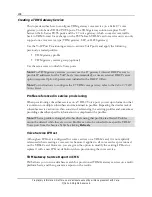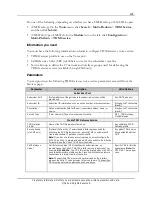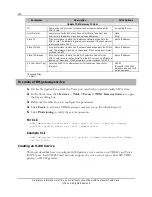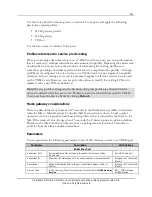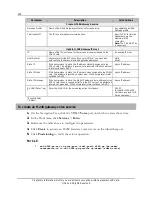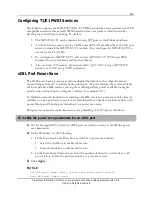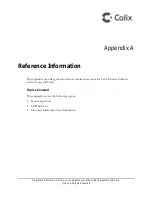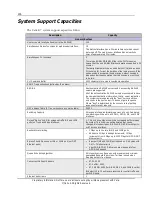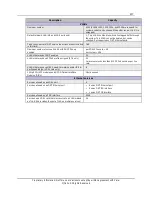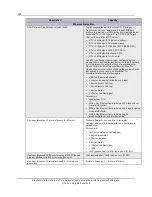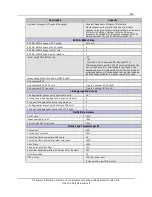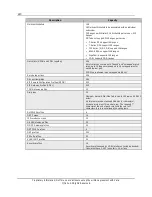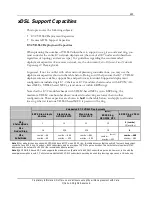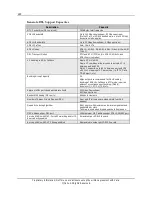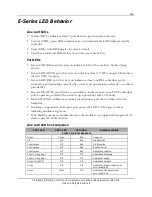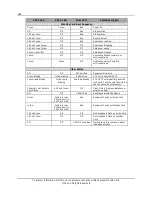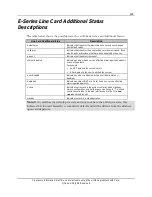
222
Proprietary Information: Not for use or disclosure except by written agreement with Calix.
© Calix. All Rights Reserved.
General xDSL Support Capacities
Description
Capacity
MTU Packet Size (DSL services)
1536 Bytes total frame size
VDSL2 Bandwidth
Up to 100 Mbps downstream, 50 Mbps upstream
(Profile 17a). For VDSL2 bonded pairs, up to 100 Mbps
downstream also applies.
ADSL2+ Bandwidth
Up to 24 Mbps downstream, 3 Mbps upstream
VDSL2 Profiles
8a-d, 12a-b, 17a
ADSL Modes
ADSL2+, ADSL2, RE-ADSL, ADSL (G.dmt, G.lite, ANSI
T1.413)
DSL Transport Modes
PTM and ATM (PTM only in VDSL2, ADSL2+ and
ADSL2 service modes)
VC handling in ADSL Fallback
Single VC or Multi VC
Single VC combines all services onto a single VC in
between port and CPE.
Multi VC supports up to 6 VCs between port and CPE
with 1 to 1 mapping of VC per service (i.e. IPTV, Data,
TR-69 mgmt., etc.)
Bonding Group Capacity
24
Adjacent ports recommended for DSL Bonding.
Bonding of ADSL2+ Fallback in ATM mode, requires
adjacent or contiguous port bonding; [Odd(n),
Even(n+1)]: [1,2], [3,4], [5,6], etc.
Adjacent xDSL ports bonded train rate limits
120 Mbps Downstream
60 Mbps Upstream
Bandwidth Shaping (DSL ports)
64 kbps increments
Number of Egress Priority Queues (DSL)
4 per port (P-bit values are mapped into four CoS
queues)
Queue Scheduling Algorithm
Strict priority with maximum and minimum guaranteed
bandwidth per class.
Tail drop is used when dropping packets from queue.
MAC addresses per DSL port
128 maximum MAC addresses per VDSL2-48/-48C port
Service VLANs with MAC-Forced-Forwarding and/or IP-
Source-Verify enabled
8 maximum per VDSL2 line card
Service VLANs with DHCP Snoop enabled
48 maximum number per VDSL2 line card

